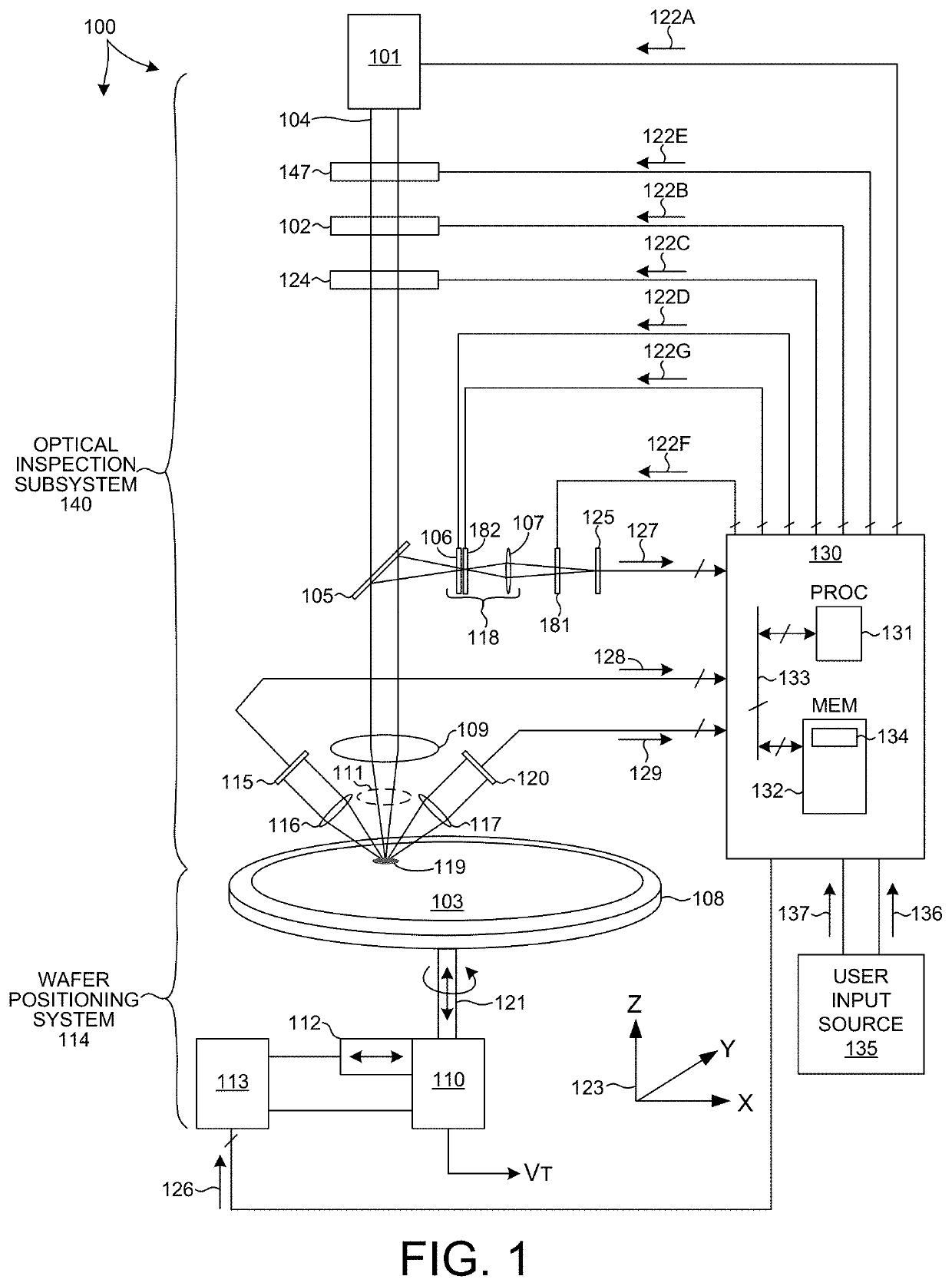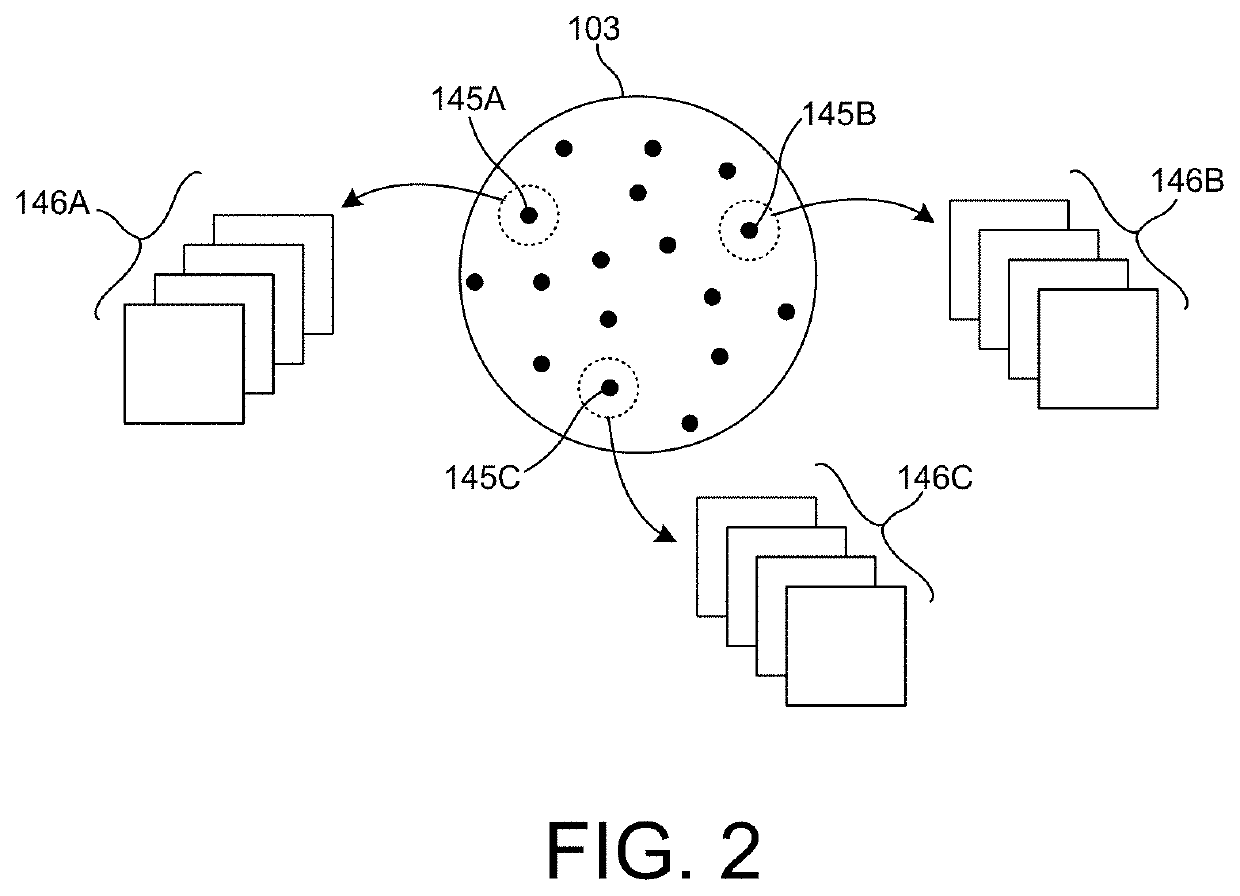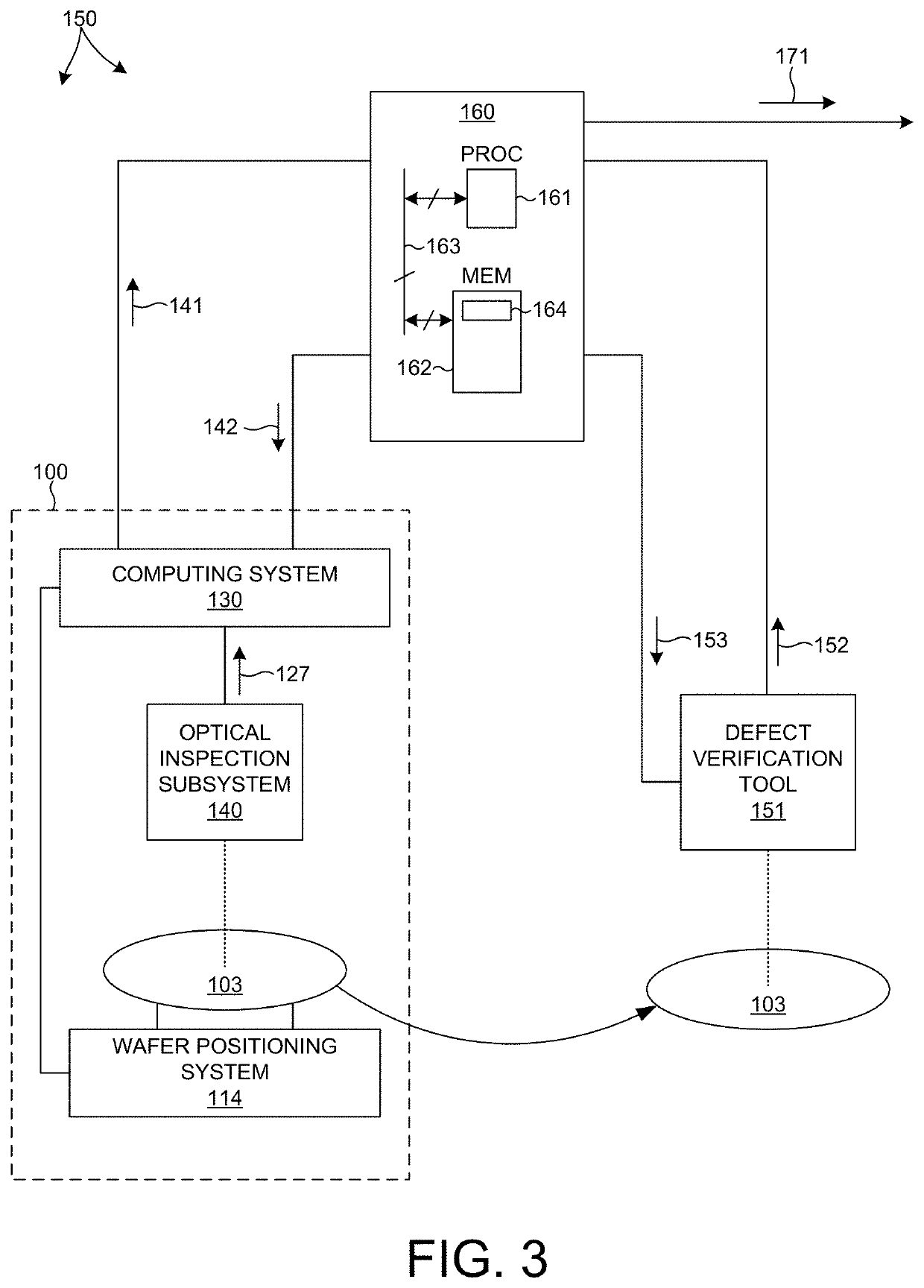Methods And Systems For Inspection Of Semiconductor Structures With Automatically Generated Defect Features
a technology of automatic generation and defect features, applied in the field of specimen inspection, can solve the problems of high aspect ratio structures that create challenges for patterned wafer inspection, no guarantee that the selected attribute or set of attributes optimally captures the desired separation, and no guarantee that the selected attribute or set of attributes optically classifies the dois, etc., and achieves the effect of reducing the number of attributes employed
- Summary
- Abstract
- Description
- Claims
- Application Information
AI Technical Summary
Benefits of technology
Problems solved by technology
Method used
Image
Examples
Embodiment Construction
[0029]Reference will now be made in detail to background examples and some embodiments of the invention, examples of which are illustrated in the accompanying drawings.
[0030]Methods and systems for improved detection and classification of defects of interest (DOI) within semiconductor structures are described herein. In particular, nuisance filtering and defect classification based on optical inspection is realized by estimating the values of one or more automatically generated attributes derived from images of a candidate defect. A statistical classifier is trained to classify defects based on the values of the automatically generated attributes.
[0031]The automatically generated attributes are determined by iteratively training, reducing, and retraining a deep learning model. The deep learning model relates optical images of candidate defects to a known classification of those defects. The deep learning model is iteratively reduced in complexity, while maintaining sufficient classi...
PUM
 Login to View More
Login to View More Abstract
Description
Claims
Application Information
 Login to View More
Login to View More - R&D
- Intellectual Property
- Life Sciences
- Materials
- Tech Scout
- Unparalleled Data Quality
- Higher Quality Content
- 60% Fewer Hallucinations
Browse by: Latest US Patents, China's latest patents, Technical Efficacy Thesaurus, Application Domain, Technology Topic, Popular Technical Reports.
© 2025 PatSnap. All rights reserved.Legal|Privacy policy|Modern Slavery Act Transparency Statement|Sitemap|About US| Contact US: help@patsnap.com



